| Jiri-san Cheonhwang-bong Beopgye-sa 지리산 천황봉 법계사 法界寺 1300 meters up Exquisite-Wisdom Mountain Heavenly-King Peak Dharmadhatu Temple in the Inner-Southeast Sector of Jiri-san |
| Viewed from a higher ridge to the south, Beopgye-sa is clearly seen on the lower-left, beneath Jiri-san Cheonhwang-bong Peak upper-right. It's about 1300 meters high -- making it One of South Korea's Eight Highest Temples. Its name "Beob-gye" means the Sanskrit "Dharmadhatu" -- the 'dimension', 'realm' or 'sphere' (dhatu) of the Dharma, or in other words, Absolute Reality. |

| close-up |


| At the Beobgye-sa-ipgu trailhead, I found a new pavilion with Neo-Traditionalist Jang-seung poles and dol-tap cairns. Just 5 minutes up the trail, I passed the Kal-bawi [Knife Boulder], the ancient indicator of the path to climb up to the temple & peak. |


| Beobgye-sa's sacred boulders and the pagoda erected on one of them -- a very rare positioning, implying that Shamanic rock-worship serves as a "base" for Buddhist practices, and that the pagoda serves as an "antenna" amplifying the conduction of Heavenly and Earthly energies [천기지기]-- concepts related to Doseon-guksa's theories of Bibo-pungsu-jiri. |


The male San-shin originally enshrined in
the Main Hall (on my visit in 1998) is modern
but terribly ordinary. Given this location, it's
surprising that it's not Female.
The Yong-wang [Dragon-King of the [Waters]
has unusual prominent clouds -- quite
appropriate for this location far from
any seas, but host to myriad swirling or
foggy clouds clustering around the peak,
offering rains to all the region.
the Main Hall (on my visit in 1998) is modern
but terribly ordinary. Given this location, it's
surprising that it's not Female.
The Yong-wang [Dragon-King of the [Waters]
has unusual prominent clouds -- quite
appropriate for this location far from
any seas, but host to myriad swirling or
foggy clouds clustering around the peak,
offering rains to all the region.
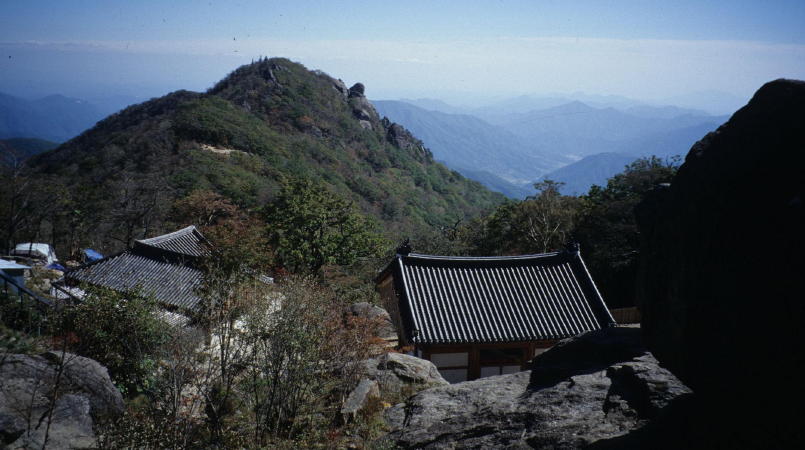
| View from the Main Hall out to and beyond the south ridge (from which I took the photos at the top). |
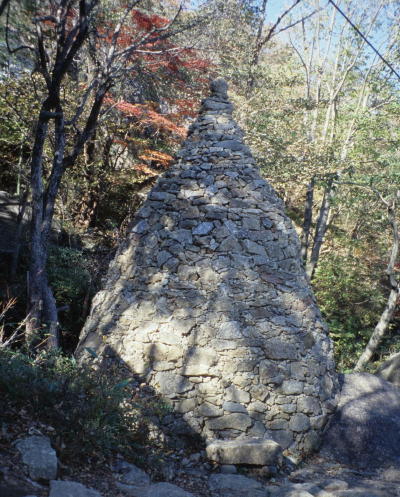
A modern fitted dol-tap [stone pagoda]
with small spirit-worship altar, out in
the forest near Beobgye-sa.
with small spirit-worship altar, out in
the forest near Beobgye-sa.
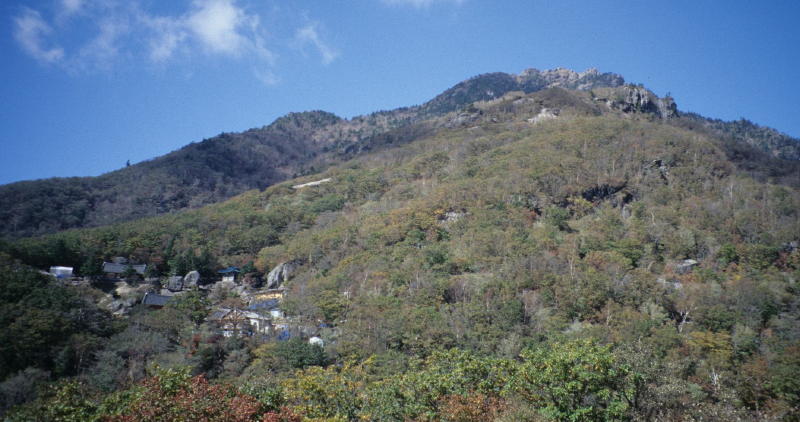


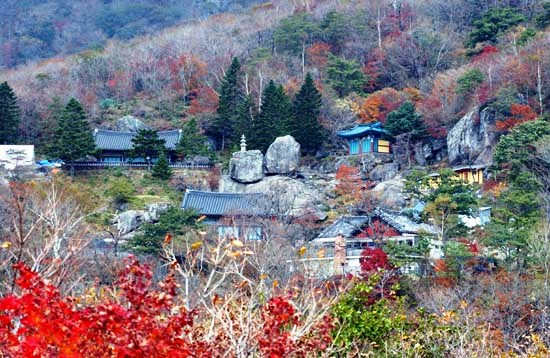
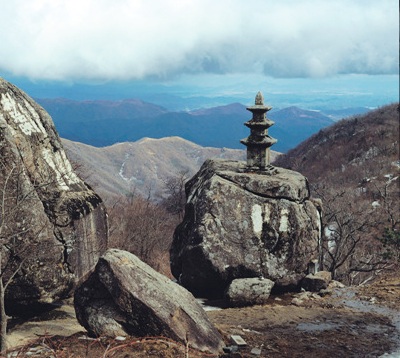


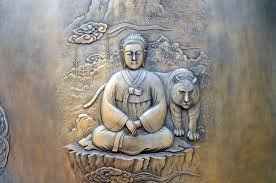

| Images of the Female Sanshin (below) and the famous Pagoda, on Beopgye-sa's new Bell |

| as of about 2008, a Female Sanshin painting was added to this shrine, on the left wall. |

| By 2013, it had been moved to beside the male one -- same size, likely the same artist; and they are enshrined in an equal and parallel way -- a "wife-and-husband" set...? |

| The Jiri-san Cheon-hwang-bong Seong-mo-halmae San-shin is depicted in pure white robes, and as in attractive middle-age, as a black-haired "immortal" -- quite different from the male ones in king's red-gold robes and elderly appearance! |

| Somebody put all three of the Samseong-gak icons together as a set.... |

| Also as of 2014 or so, they have installed a new large stone statue of her -- and a sign nearby explicitly links her to the Chinese-Daoist deity Mago/Magu! This is a new step taken... |